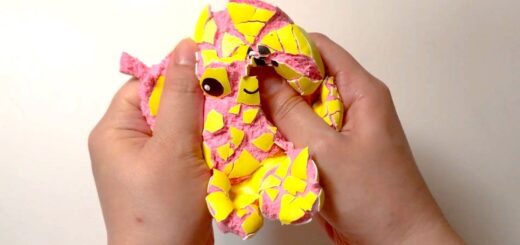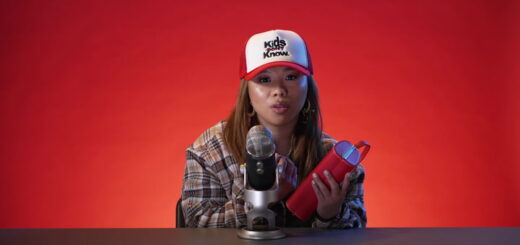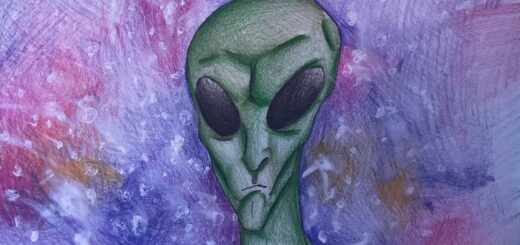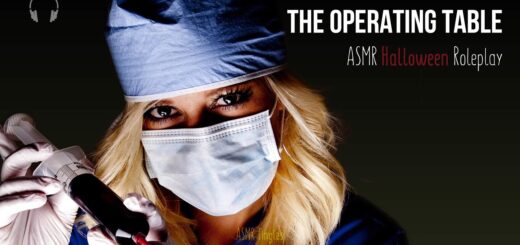ART CLASS – FUSION ART – ASMR – Body Painting
Dawn Cummins
ART CLASS – ASMR – Autonomous sensory meridian response (ASMR), sometimes auto sensory meridian response, is a tingling sensation that typically begins on the scalp and moves down the back of the neck and upper spine. A pleasant form of paresthesia, it has been compared with auditory-tactile synesthesia and may overlap with frisson.
ASMR signifies the subjective experience of “low-grade euphoria” characterised by “a combination of positive feelings and a distinct static-like tingling sensation on the skin”. It is most commonly triggered by specific auditory or visual stimuli, and less commonly by intentional attention control. A genre of videos which intend to stimulate ASMR has emerged, of which over 13 million are published right here on YouTube!
ART CLASS – BODY PAINTING – Body painting is a form of body art where artwork is painted directly onto the human skin. Unlike tattoos and other forms of body art, body painting is temporary, lasting several hours or sometimes up to a few weeks (in the case of mehndi or “henna tattoos” about two weeks). Body painting that is limited to the face is known as “face painting”. Body painting is also referred to as (a form of) “temporary tattoo”. Large scale or full-body painting is more commonly referred to as body painting, while smaller or more detailed work can sometimes be referred to as temporary tattoos.
Body painting with a grey or white paint made from natural pigments including clay, chalk, ash and cattle dung is traditional in many tribal cultures. Often worn during cultural ceremonies, it is believed to assist with the moderation of body heat and the use of striped patterns may reduce the incidence of biting insects. It still survives in this ancient form among Indigenous Australians and in parts of Africa and Southeast Asia, as well as in New Zealand and the Pacific islands. A semi-permanent form of body painting known as Mehndi, using dyes made of henna leaves (hence also known rather erroneously as “henna tattoo”), is practised in India, especially on brides. Since the late 90’s, Mehndi has become popular amongst young women in the Western world.
ART CLASS – BOB ROSS – Robert Norman Ross (Oct 29, 1942 – July 4, 1995) was an American painter, art instructor and television host. He was the creator and host of The Joy of Painting, an instructional television program that aired from 1983 to 1994 on PBS in the United States and in Canada, Latin America and Europe. Ross went from being a public television personality in the 80’s and 90’s to posthumously being an Internet celebrity in the 21st century.
Ross used the ‘WET-ON-WET’ oil painting technique in which the painter continues adding paint on top of still-wet paint rather than waiting a lengthy amount of time to allow each layer of paint to dry. From the beginning, the program kept the selection of tools and colours simple so that viewers would not have to make large investments in expensive equipment. Ross frequently recommended odourless paint thinner (aka odourless mineral spirits) for brush cleaning. Combining the wet painting method with the use of large one- and two-inch brushes, as well as painting knives, allowed Ross to paint trees, clouds, mountains and water in a matter of seconds. Each painting would start with simple strokes that appeared as nothing more than smudges of colour. As he added more and more strokes, the blotches would transform into intricate landscapes.
ART CLASS – BOB ROSS & ASMR – The Twitch & Youtube streams created a new interest in Ross and caused his popularity to grow. His videos became popular with devotees of the autonomous sensory meridian response (ASMR). ASMR refers to a euphoric feeling which can be experienced in a variety of ways. Triggers can be aural, touch-based or both.
“He’s sort of the godfather of ASMR,” says Joan Kowalski, the president of Bob Ross Inc. “People were into Bob Ross for ASMR reasons before there was ASMR.”
ART CLASS – BOB ROSS & COVID-19 – The BBC re-ran them during the Covid-19 pandemic of 2020 while most viewers were in LOCKDOWN at home. During each half-hour segment, Ross would instruct viewers in oil painting using a quick-study technique from the imagination that used a limited palette of paints and broke down the process into simple steps.
Source














